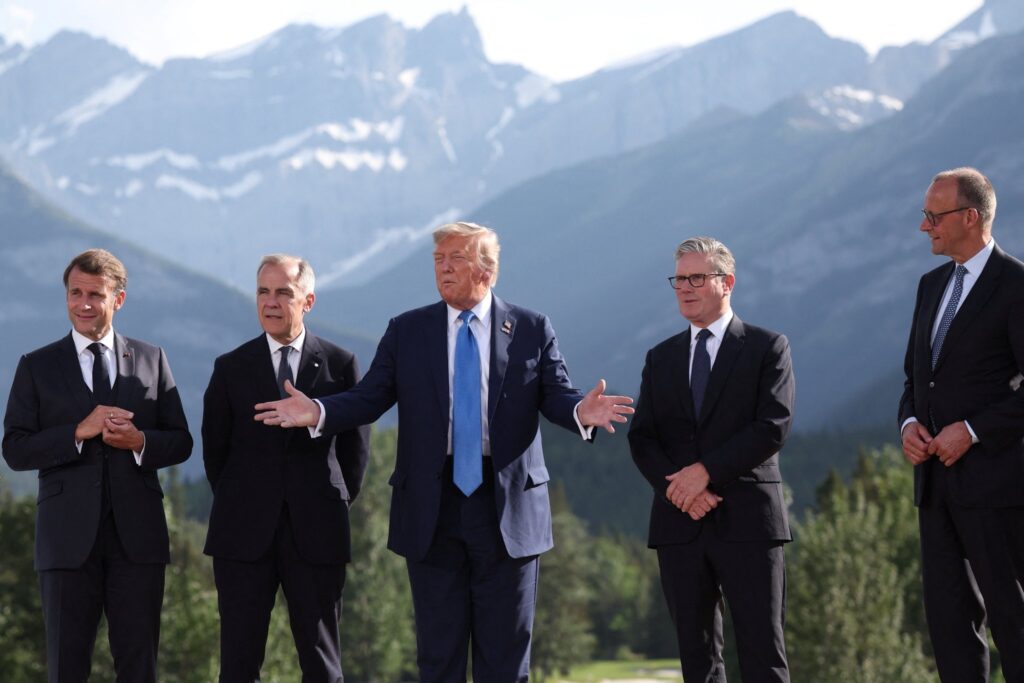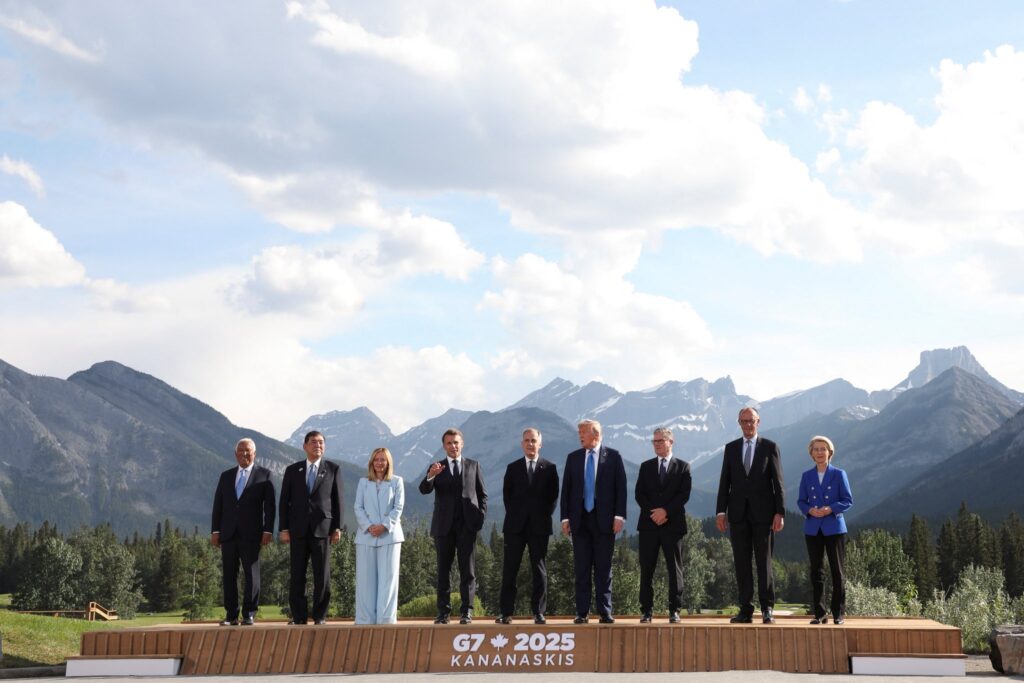Kananaskis, Alberta (Rajeev Sharma): As violence intensifies between Israel and Iran, leaders of the G7 nations have issued a united appeal for a “de-escalation of hostilities in the Middle East”, calling specifically for a ceasefire in Gaza. In a joint communiqué released late Monday, the group reaffirmed its commitment to regional peace and stability while also asserting that “Israel has a right to defend itself.”
The summit, held in the Canadian Rockies, was rocked by geopolitical developments as U.S. President Donald Trump left the gathering early, citing the worsening crisis. “I have to be back early for obvious reasons,” he told reporters, hinting at high-level decisions awaiting him in Washington.
Tensions surged further after Iran and Israel engaged in military strikes for a fifth consecutive day. Hours after Trump’s early departure, reports emerged of explosions and anti-aircraft activity in Tehran, while air raid sirens echoed through Tel Aviv following new Iranian missile launches.

Trump’s return to Washington coincides with an emergency National Security Council meeting. U.S. Defense Secretary Pete Hegseth confirmed the deployment of “additional capabilities” to bolster America’s defensive posture in the region, though officials stressed that the U.S. has no intention of joining Israel’s offensive.
Despite the dramatic exit, the White House maintained that Trump had a “productive” day at the summit. According to Press Secretary Karoline Leavitt, one major outcome was a new U.S.-UK trade agreement. “He had a great day. A lot got done,” she insisted, adding that Trump left due to “developments in the Middle East.”
Trump’s departure means he will miss key in-person meetings scheduled for Tuesday with Ukrainian President Volodymyr Zelensky and Mexican President Claudia Sheinbaum. Addressing the media before leaving, Trump said his return was necessary for “big stuff” awaiting him back home.
In a flurry of social media posts prior to his departure, Trump reiterated his long-held position: “Simply stated, IRAN CAN NOT HAVE A NUCLEAR WEAPON,” he wrote. He also urged residents of Tehran to evacuate the city immediately, an ominous message that went unexplained.

French President Emmanuel Macron said Trump’s early exit was justified if it leads to diplomacy. “If the United States can achieve a ceasefire, that’s a very good thing,” Macron said. Australian Prime Minister Anthony Albanese, who was scheduled to meet Trump on Tuesday, called the move “understandable.”
The summit wasn’t without internal rifts. According to U.S. media reports, Trump initially considered blocking the joint G7 statement on the Israel-Iran conflict. However, a consensus was ultimately reached. The final communiqué stated:
“Iran is the principal source of regional instability and terror. We have been consistently clear that Iran can never have a nuclear weapon.”
Trump also stirred controversy by once again criticizing Russia’s 2014 expulsion from the then-G8 following its annexation of Crimea. “Putin speaks to me. He doesn’t speak to anybody else… he’s not a happy person about it,” the president remarked, hinting at his continuing personal diplomacy with the Russian leader.
Though the summit concluded without Trump, some progress was made, including a tariff agreement between the U.S. and UK. “The UK is very well protected from future tariffs,” Trump declared. “You know why? Because I like them.”
With the G7 summit drawing to a close, all eyes are now on Washington as the White House scrambles to navigate a potential escalation in one of the world’s most volatile regions.

